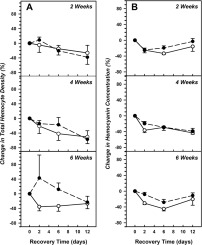Comparative Biochemistry and Physiology A: Molecular & Integrative Physiology ( IF 2.1 ) Pub Date : 2019-08-22 , DOI: 10.1016/j.cbpa.2019.110554 Kristin Linesch Hamilton 1 , Louis E Burnett 2 , Karen G Burnett 2 , Rachel E G Kalisperis 3 , Amy E Fowler 4

|
Atlantic horseshoe crabs, Limulus polyphemus (HSC), are commercially harvested along the eastern U.S. coast and bled for hemolymph used in pharmaceutical safety testing. In South Carolina, some HSCs are held in outdoor ponds before transport to facilities where they are bled and then released to the wild. This study examined whether the time HSCs are held before bleeding, bleeding itself, or the duration of the recovery after bleeding affects HSC mortality and physiological condition. Female HSCs were collected from Coffin Point Beach, South Carolina (April 22–24, 2016), held in ponds for 2, 4, 6, or 8 weeks, then bled or held as controls. Body weights, hemocyanin concentrations, and hemocyte densities were measured prior to treatment (bled/control) and at 2, 6, and 12 days of recovery. Hemocyanin concentrations declined significantly in HSCs held in ponds for 8 weeks prior to bleeding and were excluded from further analyses. Compared to some studies, HSC mortalities were low (11%). Impacts of time in holding ponds, bleeding, and recovery from bleeding on physiological measures were assessed using 3-way fixed-effects ANOVA. While duration of recovery had main effects on physiological measures, significant interactions were also present. There was an interaction of treatment and recovery duration, with control crabs having higher hemocyte densities than bled animals at days 2 and 6 of recovery. There were two significant two-way interactions influencing hemocyanin concentration: pond time and recovery, and treatment and recovery. Our study suggests both main and synergistic effects are important when assessing the physiology and mortality of HSCs harvested for biomedical purposes.
中文翻译:

时间对池塘的生理影响,生物医学流血和恢复对大西洋crab 、,鱼的影响。
大西洋horse,Li(HSC),是在美国东部沿海沿岸商业收获的,放血用于药物安全性测试中的血淋巴。在南卡罗来纳州,一些HSC被关在室外池塘中,然后运往设施中放血,然后放到野外。这项研究检查了HSC在出血前的停留时间,出血本身或出血后恢复的持续时间是否会影响HSC的死亡率和生理状况。从南卡罗来纳州科芬角海滩收集雌性造血干细胞(2016年4月22日至24日),在池塘中放置2、4、6或8周,然后取血或作为对照。在治疗前(出血/对照)以及恢复的第2、6和12天测量体重,血蓝蛋白浓度和血细胞密度。出血前在池塘中饲养的HSC中血蓝蛋白浓度显着下降了8周,因此未进行进一步分析。与某些研究相比,HSC死亡率较低(11%)。使用三效固定效应方差分析(ANOVA)评估了池塘停留时间,出血和从出血中恢复对生理指标的影响。恢复的持续时间对生理指标有主要影响,但也存在重要的相互作用。治疗和恢复时间之间存在相互作用,在恢复的第2天和第6天,对照蟹的血细胞密度比放血的动物高。影响血蓝蛋白浓度的两个重要的双向相互作用是:池塘时间和恢复,以及处理和恢复。











































 京公网安备 11010802027423号
京公网安备 11010802027423号